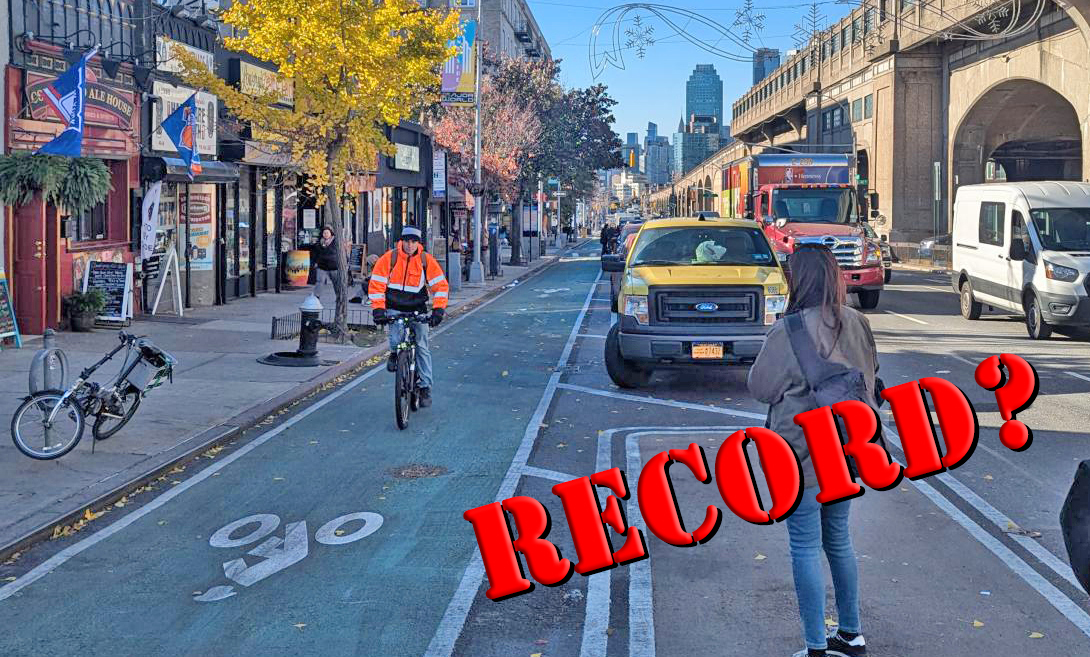What's next for the proposal to establish a wage floor for app-based for-hire vehicle drivers? A panel of labor and taxi experts including TLC Commissioner Meera Joshi evaluated the plan and its immediate prospects at TransitCenter Monday night.
The plan drafted by James Parrott and Michael Reich would require e-hail companies like Uber and Lyft to compensate drivers at a rate of at least $17.22 per hour. In addition to a 22 percent raise for the average driver currently earning less than that rate, the policy would act as a brake on traffic increases caused by the ride-hailing companies, reducing the time drivers spend cruising without a fare.
The TLC, which commissioned the report by Parrott and Reich, can implement the policy through its regulatory powers. It's essentially up to Mayor de Blasio whether to move forward. If enacted, the policy could set a national precedent for the ride-hail industry and other "gig economy" sectors that rely on independent contractors. But last week, the mayor's office undercut Joshi, calling the endorsement of the report "premature" and signaling that de Blasio wants to work with the City Council on legislation to improve driver wages.
Joshi didn't give a timetable for implementation last night, but she said she doesn't expect riders to revolt if fares are a little higher due to a wage floor. "We added a 30-cent surcharge to taxi rides to help defray the cost of accessible vehicles," she said. “And the public opinion was, ‘Oh if my ride goes up by 30 cents but that means someone in a wheelchair is gonna get a ride, I'm fine with that.'"
While the New York Taxi Workers Alliance opposes the TLC plan because they prefer to peg driver compensation to a standard meter rate, James Conigliaro of the Independent Drivers Guild, an affiliate of the Machinists Union that represents for-hire drivers in NYC, said drivers favor the wage floor.
Conigliaro also supports TLC regulation as opposed to a more unpredictable legislative process. “Keep the City Council away from this wage proposal,” he said. “The TLC has the data, they collect the data, they've done the study. Let's let the agency go forward and set the wage standard for the industry rather than try to do that via a 50-person legislation basis.”
One concern he raised is a scenario where Uber "chops off the bottom 10 percent of drivers" who don't keep pace with the wage floor by picking up more fares, which would be akin to “laying off 10,000 full-time workers in New York City.”
But according to Parrott, that's unlikely. “[App companies] can only make money if their drivers are giving rides,” he said. “So if they diminish the number of drivers dramatically then their opportunity for their own commissions go down."
Parrott also disputed the contention from the Taxi Workers Alliance that the $17.22/hour wage floor would double as a ceiling. About 15 percent of independent contractors driving for-hire make $17.22 or more per hour. The plan also includes a $1 bonus for drivers who take on shared rides, which was specifically added to prevent $17.22 from becoming a ceiling.
“Almost one-quarter of rides [an app services] are shared,” Parrott said, “and the sense is from looking at the data is the drivers providing those shared rides are under-compensated for that.”
Uber spokesperson Jason Post, observing in the crowd, said the company is "still digesting the report" and didn't take a position on the proposal.
But Terri Gerstein of the Open Society Foundation said it's completely fair to expect Uber and its peers to attain the same minimum compensation standard employers across the city will soon be expected to meet.
“Every mom and pop in New York City as of December this year is going to be paying $15 an hour as well as the employer portion of FICA and unemployment and all these other things,” she said. “If the bodega and supermarket and car wash can pay $15 an hour, it seems difficult to believe these app-based companies would not be able to do the same thing.”






